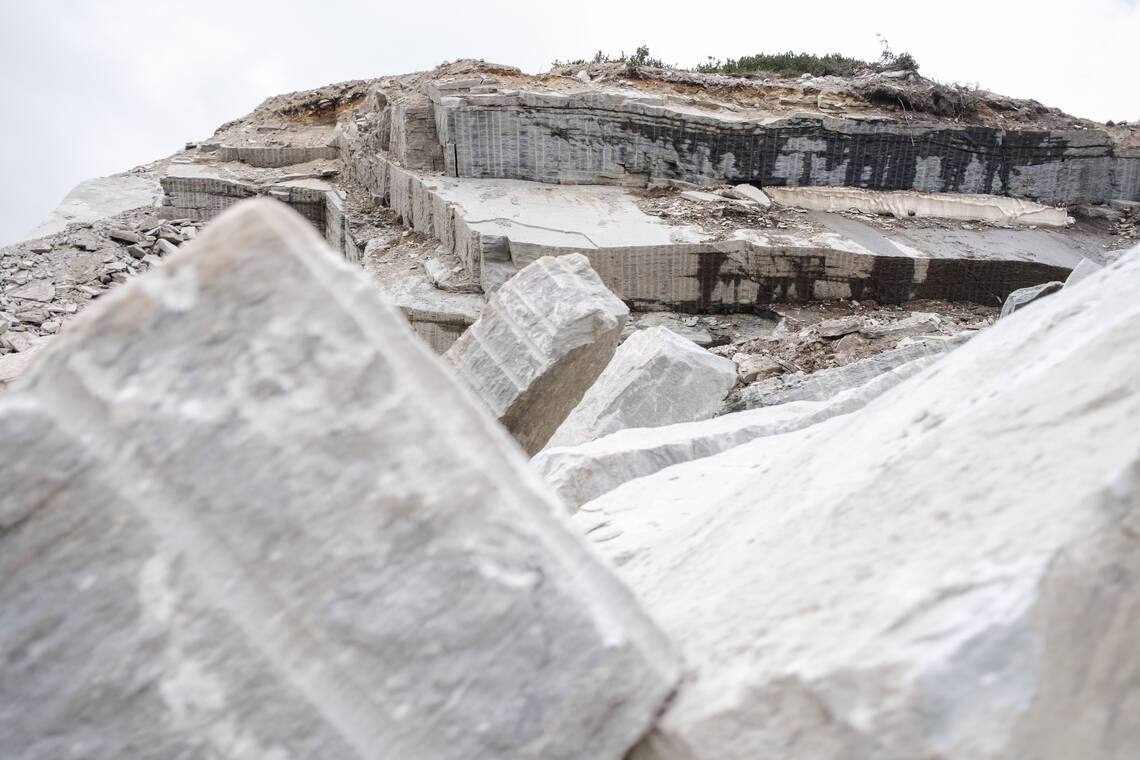SILVER GREY GLITTERING STONE
This paragneiss - also known by the old but less precise trade name Bündner Quarzit - originates from the well-known alpine Adula blanket, in which the source area of the Hinterrhein also lies. The silver-grey glittering color of San Bernardino gneiss comes from its high content of light mica (muscovite, sericite). In contrast to quartzite, gneiss contains less quartz but more feldspar. In layers close to the surface, the deposit sometimes contains the mineral limonite, which leads to golden-yellow color nuances, which are also found in yellow granites. Other names for San Bernardino gneiss are: San Bernardino silver, San Bernardino silver, Bernardine quartzite and Bündner quartzite.
San Bernardino is a gray, silvery-looking gneiss with well-defined cleavage and fine grains as well as distinct white eyes of varying sizes. The rock consists mainly of quartz, feldspar and silvery bright mica. The stone is very easy to split and was formerly used mainly for roofing, walls and as flooring. It was also used for stairs and as wall cladding both indoors and outdoors, as well as for interior fittings in bathrooms and kitchens. Other workpieces such as washbasins or kitchen worktops can also be easily made from it.
Other exciting key points
ETYMOLOGY
San Bernardino is named after the pass of the same name, on whose northern ramp it is won.
HISTORY
Stones for construction purposes, in particular bricks and split tiles, have been quarried in the area north of the San Bernardino Pass since 1953. In the 1970s and 1980s, quarrying declined sharply due to falling demand and stone was only extracted at irregular intervals. in 1992, San Bernardino was won for the expansion of the pass of the same name. As part of the renaissance of domestic natural stone, the old quarrying site was reopened in 2006.
HERITAGE, GEOGRAPHICAL REGIONSan Bernardino Pass, Canton of Graubünden, CH
ORIGIN
The original rock of the San Bernardino was formed more than 300 million years ago and was transformed into gneiss during the Alpine mountain formation around 35 million years ago in the earth's interior (depth of a few kilometers) by increased pressure and temperature conditions (metamorphosis) and brought to the earth's surface by uplift and erosion processes.
Properties: COMPOSITION/ANALYSIS
Quartz, alkali feldspar, plagioclase, muscovite (light mica), biotite (dark mica), chlorite, clinozoisite-epidote-allanite, zircon, magnetite, pyrite and carbonate
COLOUR
Grey tones, green tones
DURABILITY
San Bernardino is largely resistant to frost, acids and alkalis
SURFACE TREATMENT
Brushing, flaming, shot-peening, polishing, sandblasting, grinding, pointing, blocking


